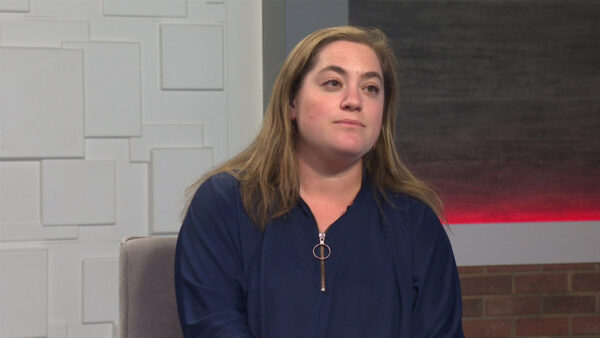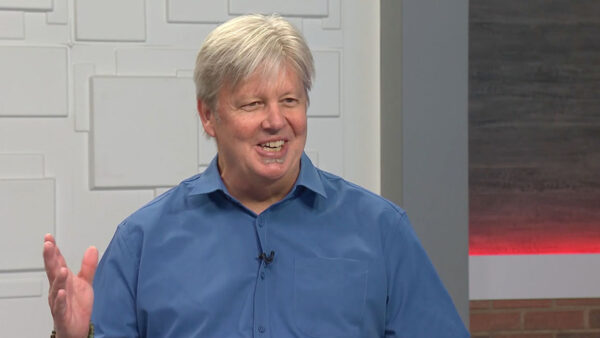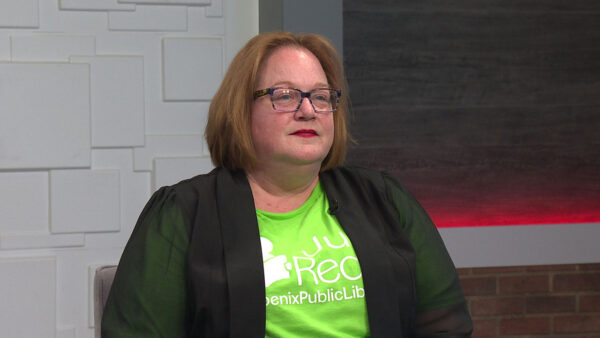Meet former BP Pacific and BP China President Gary Dirks who has been selected by ASU as director of LightWorks, a new initiative to position the university as a leader in solar power and other light-inspired research.
Ted Simons: "Lightworks" is an ASU initiative to help the university become a leader in solar power and other light-inspired research. The initiative will capitalize on ASU's strengths in renewable energy fields, including artificial photosynthesis, biofuels, and next-generation photovoltaics. "Lightworks" will eventually broaden to include other light-based projects, such as lasers for biomedical applications and energy efficient lighting. Joining us now is the new director of "Lightworks," Gary Dirks, a Ph.D. graduate in chemistry from ASU, and former head of BP China, and BP Asia-Pacific.
Ted Simons: Thank you for joining us.
Gary Dirks: Pleasure to be here.
Ted Simons: Is that what "Lightworks" pretty much is?
Gary Dirks: I think you've captured exactly what we would like to do with the initiative.
Ted Simons: Give us an example of light-inspired research.
Gary Dirks: There's a number of different examples that I could give. We have a lot of activity going on in that area. I'd like to make mention two because they are high on our list of priorities right now. One is a consortium we have just put together, called a sustainable biofuels consortium. It is over 30 institutions from around the United States and a few foreign ones. Our intention is to get a grant from DOE, about $70 million, and look at what it's really going to take to make algae an alternative source of fuel. For motor fuels, jet fuel, for the future of the country. That's one example, algae. Second example is a DOE project, again, solar to fuels. Leave the plant out, convert light directly to motor fuels.
Ted Simons: And ASU is leading the way on both of these projects.
Gary Dirks: We are in the lead on both of these projects as principal investigators.
Ted Simons: How much collaboration with other universities, industries, government agencies, these sorts of things?
Gary Dirks: There is a lot of collaboration. As broad and deep as we are, we can't do everything. In the case of algae, we have more than 30 partners, A good mix of national labs, two of the other co-leaders are national labs. Then we have business and universities, as well.
Ted Simons: Skeptics will say, sounds great, wonderful research, show me something; give me something tangible. Is there anything to show now? Will there be something to show in the near future?
Gary Dirks: There are things to show right now with algae. If you go to the web you can find any number of companies involved in algae-based research and producing specialty chemicals as well as fuels. It's happening now. They are very much at the demonstration level. The point of what we are going to try to do is actually create framework for other researchers to see what the pathway forward is going to be. What do you have to do, where do you have to make improvements so that we can really get this into the marketplace?
Ted Simons: You come from the business world. You are BP and all over the business world with BP Asia-Pacific and BP China. Renewables. We hear about solar this and sustainable that. There are some who say it's all pie in the sky, for lack of a better phrase. How do you get that kind of realistic attitude into something that right now has a lot of vision to it, but not much in the way of tangible process?
Ted Simons: I think the way you do it is very much the way we're approaching the algae biofuel consortium. You look at combining the economics with the research right up front, so that the kind of things we do in the research laboratory have sitting behind them information about the economics and why success at this particular experiment is going to improve the economics, and why success will improve the economics. That's the starting point for it. But I think at the same time we have to recognize that the energy system we have today is very large and very highly evolved. Not only is the production and distribution of energy highly evolved, but the way that it's used has co-evolved with it. Automobiles evolved with the corner gasoline station which evolved with pipeline distribution and technology to find and produce oil. It's going to take us time to replace that.
Ted Simons: It's going to take a new paradigm, in other words.
Gary Dirks: It's going to take a new paradigm, although the one that underlines us is to take advantage of some of the infrastructure that already exists. You could produce algae oil that can go into the refinery and then into the existing distribution system and then go into motors that operate today.
Ted Simons: As the head of BP Asia-Pacific, BP China, we constantly hear America is falling behind. The U.S. needs to catch up, especially with Asia, or we are going to be left behind in the dust. Not just the economy, but also research and R&D. Is that what you're seeing out there?
Gary Dirks: I don't believe that we are falling behind in the way people sometimes have you believe. There's no question but the capacity to do research and the capacity to make investments have improved enormously, particularly in Asia, over the last decade. But I think we underestimate the research capacity that the United States has, the number of universities that can do world class research. The innovation we can bring to bear in finance and in the way that we get new inventions to the marketplace, there's very few countries in the world that can do that. But we can't take it for granted. We have to continue to invest in it and take advantage of it.
Ted Simons: Okay. Thank you very much for joining us.
Gary Dirks:President of BP Pacific and BP China and ASU's Director of Lightworks;























